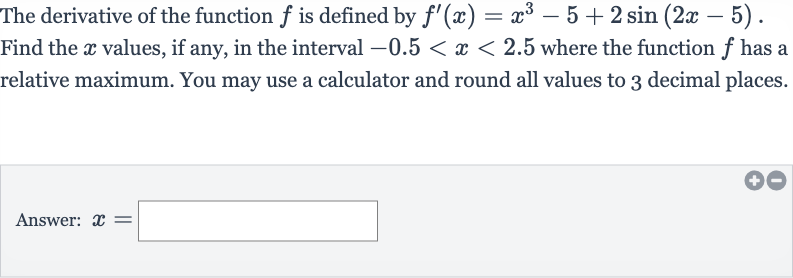Full solution
Q. The derivative of the function is defined by . Find the values, if any, in the interval where the function has a relative maximum. You may use a calculator and round all values to decimal places.Answer:
- Find Critical Points: To find the relative maximum of the function , we need to find the critical points of in the given interval. Critical points occur where the derivative is zero or undefined. The derivative is defined for all , so we only need to find where it is zero.
- Solve for : Set the derivative equal to zero and solve for :This equation is not easily solvable algebraically, so we will use a calculator to find the approximate values of in the interval -0.5 < x < 2.5.
- Graph Function: Using a calculator, we graph the function and look for points where the graph crosses the x-axis within the interval -0.5 < x < 2.5.
- Check Sign Change: After graphing, we find that the derivative crosses the x-axis at approximately . We need to check if this is a relative maximum by looking at the sign of the derivative before and after this point.
- Verify Relative Maximum: We test the sign of the derivative around . If the derivative changes from positive to negative at , then it is a relative maximum.
- Verify Relative Maximum: We test the sign of the derivative around . If the derivative changes from positive to negative at , then it is a relative maximum.Using the calculator, we find that the derivative is positive just before and negative just after . Therefore, is a relative maximum.

